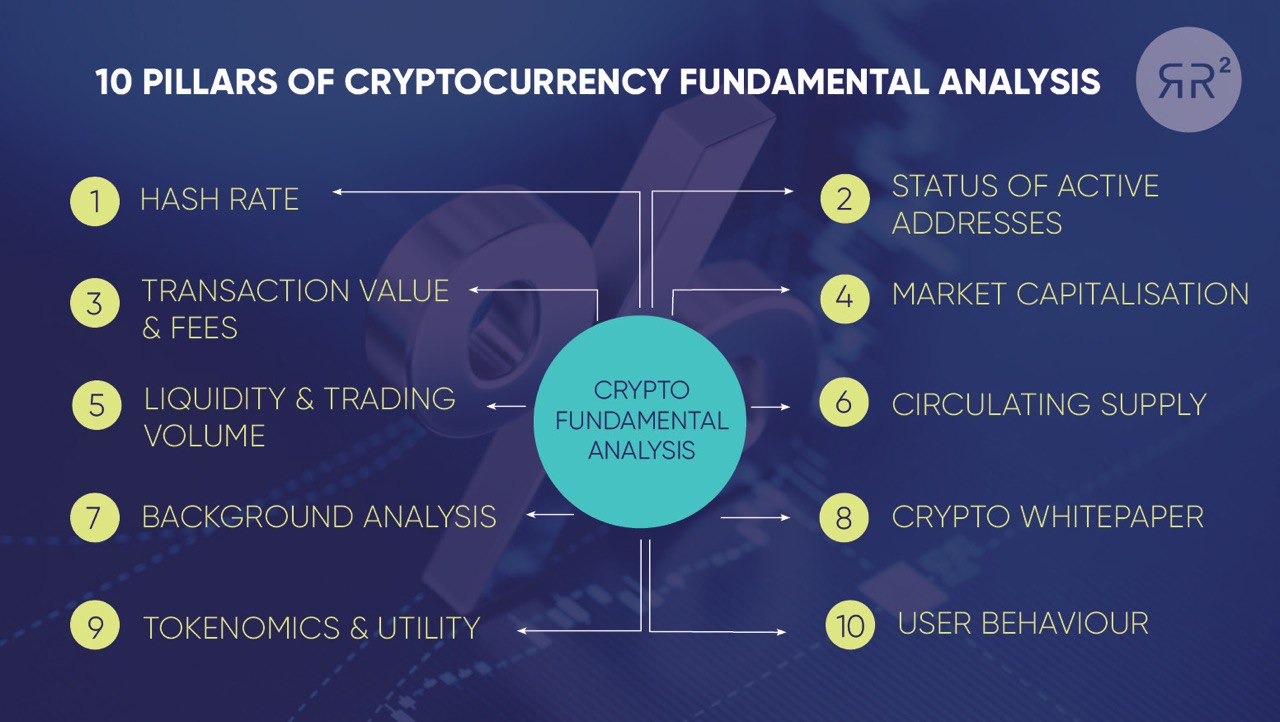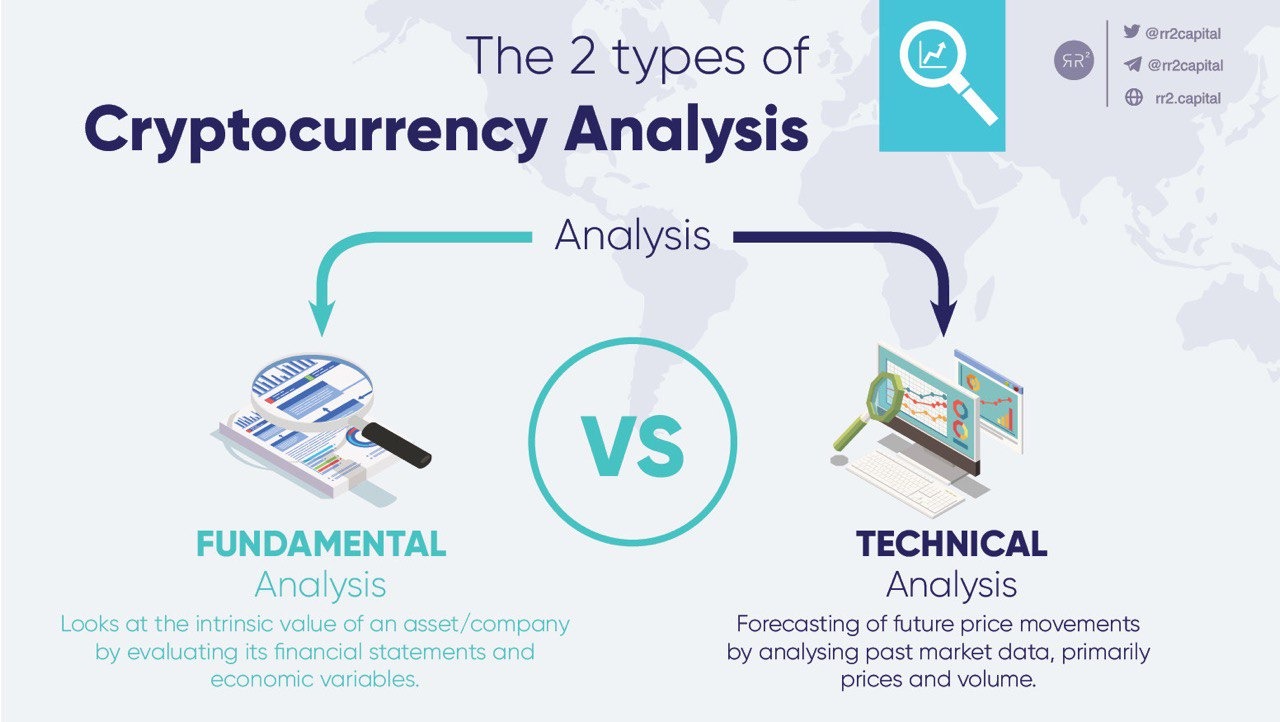Cryptocurrencies have emerged as one of the most exciting and dynamic investment opportunities of the 21st century. With their high volatility and potential for rapid price swings, cryptocurrencies offer investors the chance to earn substantial profits in a relatively short period of time.
However, with this potential for rapid price movements comes a need for careful analysis and evaluation of the market. In this regard, two key approaches have emerged: fundamental analysis and technical analysis. Fundamental analysis involves evaluating the underlying factors that affect the value of a cryptocurrency, such as its adoption rate and regulatory environment, while technical analysis involves studying price and volume data and other technical indicators to identify future trends.
By itself, no fundamental or technical analysis can give a complete picture, so most traders use both to formulate workable strategies for the crypto trading sector.
In this article, we will explore the pros and cons of each approach and offer recommendations for how traders can best use them to succeed in the fast-paced world of crypto trading.
What Is Fundamental Analysis?
Fundamental analysis is a method of evaluating the intrinsic value of an asset, such as a cryptocurrency, by examining the factors that affect its price. This approach is based on the idea that the market price of an asset will eventually reflect its true underlying value.
In the case of cryptocurrencies, there are several key factors that can impact their value. One of the most important is market adoption and awareness. The more people that are aware of and using a token, the more valuable it is likely to be. Another important factor is the regulatory environment. Cryptocurrencies that are subject to more favorable regulatory regimes are generally considered to be less risky and, therefore, more valuable.
In addition to these factors, the development and adoption of blockchain technology can also impact the value of cryptocurrencies. For example, cryptocurrencies that are built on more advanced or scalable blockchain technologies may be more valuable than those that are not. The team and their experience in the field, the whitepaper, partnerships and collaborations with other companies or organizations are all impacting the value of a cryptocurrency. If a cryptocurrency is able to form partnerships with established businesses or organizations, it may be seen as more credible and valuable.
Fundamental analysts examine these and other key factors to determine the intrinsic value of a crypto coin. While this approach can be time-consuming and require significant research, it can also provide valuable insights into the long-term potential of a cryptocurrency. However, it is important to note that fundamental analysis does not take into account short-term price movements or market sentiment, which can also impact an asset’s price movement.
What Is Technical Analysis?
Technical analysis is a method of evaluating the value of an asset, such as a cryptocurrency, by examining its historical market data and identifying patterns and trends that may indicate future market movements. Technical analysis assumes that a price movement is not random but rather follows identifiable patterns that can be found based on historical statistical data and used to predict future price movements.
In the case of cryptocurrencies, technical analysts typically use a variety of tools and indicators to evaluate past price movements. One commonly used tool is moving averages, which help to smooth out short-term price fluctuations and identify long-term trends. Another key indicator is the relative strength index (RSI), which measures the strength of a crypto asset’s price history over time. Technical analysts may use tools like Fibonacci retracement, which helps to identify potential support and resistance levels based on historical price movements.
The advantage of technical analysis is that it can provide traders with real-time insights into short-term price movements, allowing them to make quick decisions based on market conditions. However, technical analysis does not take into account the underlying factors that impact the value of a coin, such as market adoption or regulatory environment. As such, technical analysis should be used in conjunction with fundamental analysis to gain a more complete understanding of the market.
Fundamental Analysis vs Technical Analysis
Both technical and fundamental analysis are useful approaches used to evaluate the value of a cryptocurrency. While they have some similarities, they differ in their focus and methodology. Here’s a comparison of the two methods:
Focus
A fundamental analyst focuses on identifying the intrinsic value of a cryptocurrency by looking into the underlying factors that affect its price, such as market adoption, regulatory environment, and technological development. Technical analysis, on the other hand, is focused on analyzing past price history and technical indicators, such as trading volume and market trends, to predict short-term price fluctuations.
Timeframe
Another difference between the two methods is their timeframe. Fundamental analysis is generally considered a long-term strategy, as it requires significant research and analysis of data. By contrast, technical analysis is focused on short-term momentum indicators and can be used to make quick trading decisions based on real-time market conditions.
Tools and research methods
At the core, both of these analysis types seek to understand the market, but they use different tools and research methods to decipher what’s happening.
Fundamental analysis looks at the fundamental sources of information related to a given currency, such as the whitepaper, project website, team information, use case and value proposition for their token, engagement on their social channels and news that affect the long-term developments in the industry. It’s more of a slower, data-crunching approach.
Technical analysis, on the other hand, relies heavily on chart patterns and historical data points to determine trends. A technical analyst uses a number of sophisticated tools to identify key trends and patterns, such as charts, Bollinger Bands, trendlines, relative strength index (RSI), moving averages and Fibonacci retracement.
Well-Rounded Investors Should Use Both Analysis Methods
While fundamental analysis and technical analysis are often seen as competing methods for evaluating the value of a cryptocurrency, they can actually be used together to provide a more complete understanding of the market. Here’s how experienced traders use both analysis methods to gain a thorough understanding of the crypto market.
Start with fundamental analysis
Before diving into technical analysis, an investor should take the time to research and choose a few fundamentally sound cryptocurrencies they focus on. There is no point in investing money or time into trading tokens of projects that might fall apart at the first signs of the next bear market or never have the chance to succeed due to a fundamental flaw in their tokenomics.
Use the technical analysis for short-term insights
While fundamental analysis is important for selecting which tokens to trade or invest in, it may not provide insights into short-term price movements. This is where technical analysis comes in. By analyzing historical price patterns and technical indicators, traders can identify short-term trends and make quick trading decisions, such as buying or selling points, based on real-time market conditions.
Combine the two methods for a higher chance of financial success
By using both fundamental and technical analyses, investors can keep their fingers on the pulse of the crypto market and better predict the future price trajectory of crypto assets.
Keep looking through the fundamentals periodically to see if the initial favourable assessment of the project still stands. Has the team changed? Is there an updated whitepaper to read through? Has a new piece of regulation been passed that affects the outlook for the project? Based on ongoing fundamental analysis, investors can slowly update their portfolio if needed, making sure that every token they invest in still deserves to be there.
And keep assessing technical indicators to see where the market is headed in the short term. Are prices continuing to trend higher, or are they showing signs of a slowdown? What do chart patterns tell you about future price movements? Is it a good time to buy more, or does the near-term outlook of the crypto market warrants some profit-taking instead?
FAQ
Does crypto have any fundamentals?
Yes, cryptocurrencies do have fundamentals that can impact their value. While an analyst in the stock market looks at the income statement, the cash flow statement and the value of the company’s assets to determine its intrinsic value, fundamental analysis works slightly differently for crypto assets.
Some of the key factors that can impact the value of a cryptocurrency include its team composition and experience, adoption rate, regulatory environment, the number of social media followers they have, the engagement metrics of these followers, technological development of the project, etc.
Understanding these fundamentals can be valuable for traders looking to create a superior trading strategy in the fast-paced world of cryptocurrency trading.
Which analysis is best for crypto?
There is no one-size-fits-all answer to the question of which analysis method is best for crypto. Both fundamental and technical analysis have their advantages and disadvantages, and the best approach will depend on a trader’s goals and investment style.
Fundamental research can be valuable for traders looking to evaluate the long-term potential of a cryptocurrency. This type of analysis can be time-consuming and require significant research, making it less suited for short-term traders.
Technical analysis can be a powerful tool for short-term traders looking to capitalize on real-time market conditions. However, it may be less useful for long-term investors.




